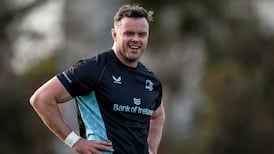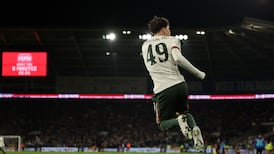The AIB All-Ireland League made quite a stunning recovery last week. When many people were questioning the relevance of the competition up popped the bank to hand over £2 million in sponsorship for the next three years. That's quite an endorsement.
The matter of whether the league is important or not is one of subjectivity, depending on whether you listen to the coaches, sponsors, the union or the players.
The disappointment in some quarters that the competition has become the third-most important level of rugby in the country after provincial and international has drawn divided opinion but much of it remains positive.
The point IRFU president, Roy Loughead, made at the launch of the sponsorship deal at Lansdowne Road and the aspect which AIB seized upon was that the breadth of the All-Ireland league had not diminished even if the depth had. In other words, many people are still playing the game although outside interest is largely consumed by the appeal of the provincial and international competitions.
The All-Ireland League now, as Loughead described, is the broad base on which is heaped the other two tiers. It has changed quite dramatically in it's role but none-the-less, say the IRFU, it still serves an important function, arguably the most important in that it nourishes the needs of the game as a whole.
Willie Anderson, who was in Dublin on Tuesday, acknowledged the fact that he would not see his formidable crew of contracted players at Dungannon until the end of the season, when perhaps it may be too late for them to play the club into another trophy-winning position.
The same applies to St Mary's, Galwegians and several other clubs to a greater or lesser extent.
"It is the third tier but it gives opportunities to young lads," says Anderson. "Under-21 rugby is fantastic but at the end of the day, they've got to be able to play against men."
Measuring the AIL's stature by the crowds, the bar takings or by the column inches in newspapers is likely to disappoint and this was highlighted by Garryowen Chairman Frank Hogan, who referred to "hopelessly diminished crowds" and "mediocre games." But even there disagreement exists.
"After last year there has been renewed interest," says Dungannon captain Alastair Boyd. "For the bulk of the squad the league is the main focus this year. It is still as important as it was although probably not doing itself justice because the top players are not playing. Our crowds have always come out, but more so this year."
Another success story from last year, Carlow, are also upbeat about the league's position. They too are riding high on the back of successive promotions from junior rugby to division one.
"It's a disappointment that we don't get to play against those players (contracted)," says captain Andy Melville. "But I think the structure is good for Irish rugby because clubs are forced to develop younger players at this level. It is a way of making Ireland successful at international level. We get great local support and we hope it to get even better this season."
At Shannon, the view of captain David Quinlan arrives through the prism of a club who were once serial winners of the competition, but have been forced to concentrate on underage players, which they have done successfully. Last year the Limerick side finished eighth in the table.
"John Lacey is now the oldest in the squad and he's 28 or 29 years old. I really don't think the club is all that happy with the league situation, especially finance, players and crowds-wise," says Quinlan.
"This is my fifth year and I've noticed crowds going down a good bit. People want to see players like Mick Galwey. I think there is going to have to be a medium somewhere."
The issue of diminishing crowds is critical, not only from the point of view of players competing in a charged atmosphere but also the gate and bar receipts which keep the clubs afloat.
Galwegians captain Barry Gavin believes the shift is back towards a different ethos, when teams had a mix of young players and people who also had to hold down full-time jobs. "Where else do the stars of tomorrow get their chance ?" he asks.
"Definitely there is less interest so far (in pre-league games) but the match this weekend against Buccs will be a barometer. This is like a local derby and if there isn't a good crowd, that would indicate a down turn.
"As it is, it is highly frustrating. We don't know who is going to be playing or contracted. You almost need two squads and that's very difficult. And you don't know who or what you will meet week to week.
"Going back to domestic fare after the European and international competitions might not be that appetising."
DLSP's as yet unconfirmed captain Seamus Sarsfield takes a more explicit view while Clontarf manager Leo Kennedy also sees the league playing a developmental role. Both are clubs that will not be seriously disrupted by players engaged at a higher level.
"No, I don't see the AIL as diminished. The AIL is the foundation for Irish rugby," says Sarsfield. "This is where they will get their interprovincial and international players. Contracted players are getting the benefit of this structure and I see that as a positive thing."
Connacht's Tommy Kearns is Clontarf's only provincial player and they look at the league through the eyes of what is essentially a parish or locally based club.
"The All-Ireland League is still very important even if it is not as big an event," says Kennedy.
"There are positives and negatives. The league has taken a back seat but everyone is getting on with it. It is still tough and exciting and it is still a good day out."
It starts today. It is not what it was, but it is what it is.









